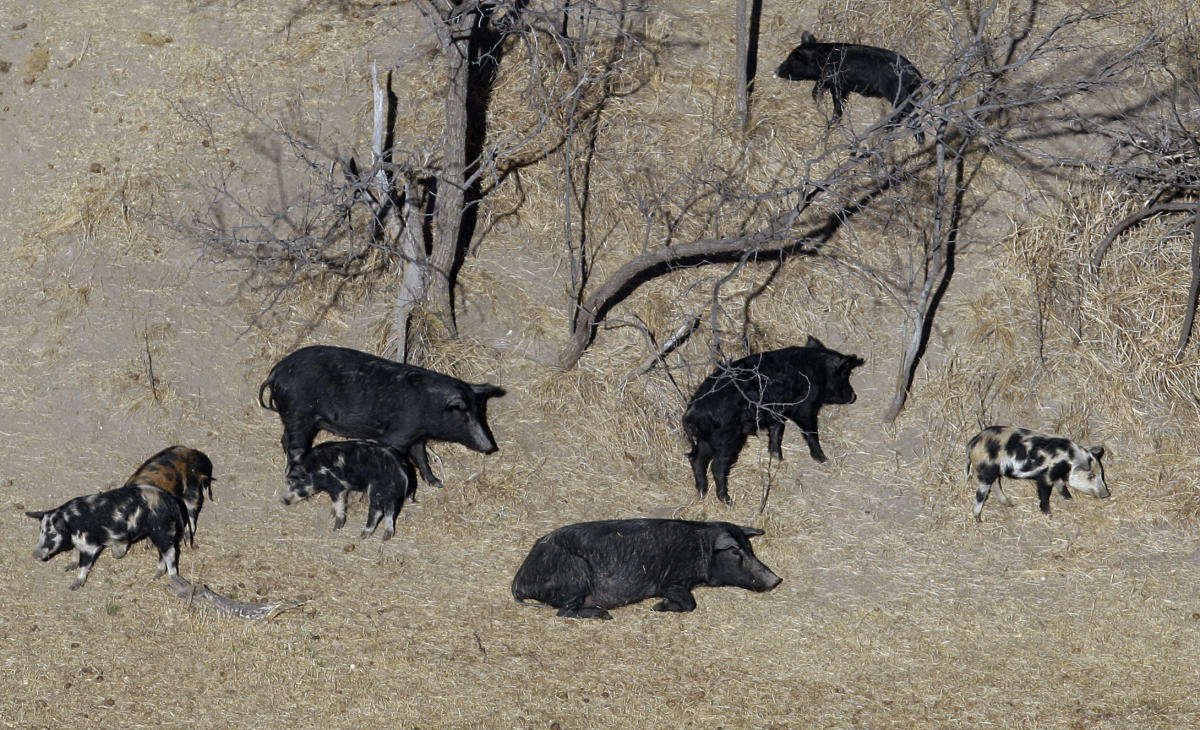MINNEAPOLIS (AP) — A burgeoning population of hard-to-eliminate “super pigs” in Canada poses a serious threat of crossing into northern U.S. states like Minnesota, North Dakota, and Montana, leading to swift measures to prevent their spread.
In Canada, the wild pigs in Alberta, Saskatchewan, and Manitoba have become an escalating concern due to their resilient nature and rapid reproduction, creating a new breed known as “super pigs” which combine the survival skills of wild Eurasian boar with the large size and prolific breeding of domestic swine.
According to Ryan Brook, a University of Saskatchewan professor and expert on this issue, feral swine are “the most invasive animal on the planet” and have wreaked havoc as an ecological disaster.
Pigs were initially introduced to Canada in the 1980s, thriving due to their adaptability to extreme weather conditions and voracious appetite. The uncontrolled release of these pigs led to widespread ecological damage and their ability to spread devastating diseases is a growing concern.
Brook noted the relentless reproduction of these wild pigs, with a single female pig capable of producing up to 12 piglets annually, presenting a challenge for eradication efforts. Their current population in Canada has reached a staggering 62,000, with signs of their presence near the U.S.-Canada border.
Experts have identified that hunting exacerbates the issue, pushing pigs to become more elusive and aggressively nocturnal. Moreover, these pigs are responsible for $2.5 billion in annual damage to U.S. crops, and have posed safety risks to humans.
Despite the dire situation in Canada, some U.S. states have succeeded in eliminating wild pigs through a comprehensive detection and rapid response strategy. Montana has led the charge by banning the raising and transportation of wild pigs within the state, implementing aggressive trapping methods, and leveraging effective surveillance.
Minnesota has also taken proactive measures, with the Department of Natural Resources expected to release a report identifying gaps in their management plan and proposing new prevention measures.
Efforts by the U.S. Department of Agriculture have focused on enhancing surveillance along the northern border to track and prevent the entry of wild pigs into the country.
The National Feral Swine Management Program, launched in 2014, has provided critical assistance to 33 states, aiming to eradicate wild pigs in areas of low population and limit damage in established pig territories such as Texas and the southeastern U.S.
While progress has been made, with success stories in several states, complete eradication of wild pigs remains a distant goal.
___
Follow AP news about invasive species at: https://apnews.com/hub/invasive-species.


